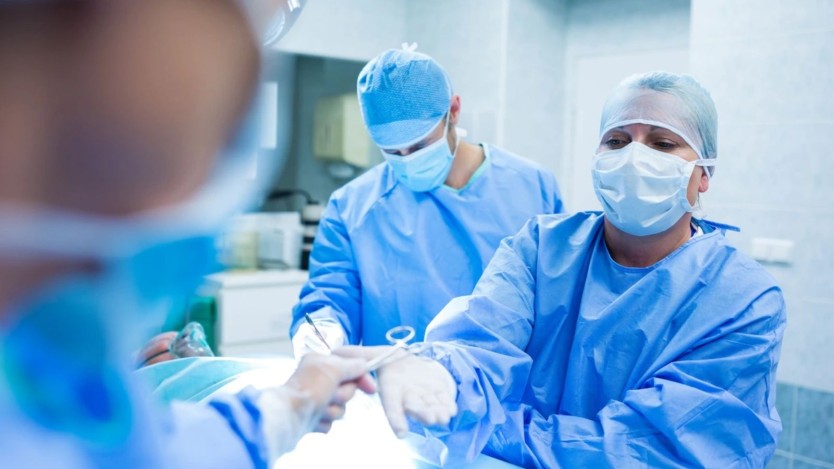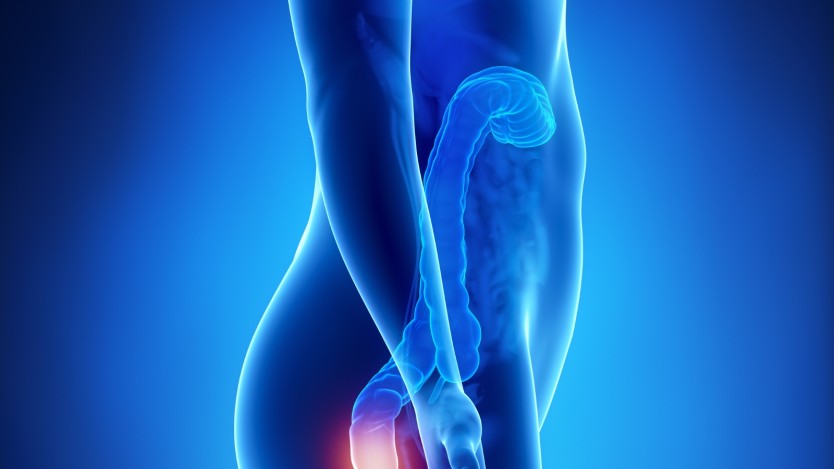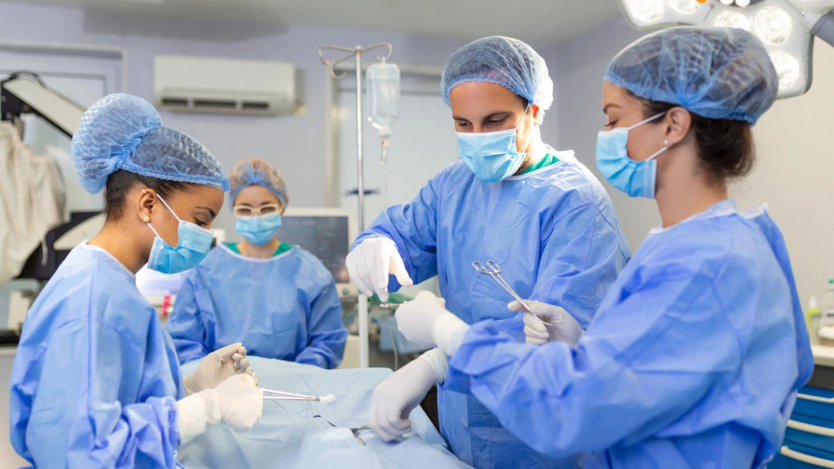Anal injuries, types, differences and treatments

- What are anal injuries?
- Types of anal injuries
- Causes of different anal injuries
- Symptoms of different anal injuries
- Treatments for anal injuries
- Are you considering surgical treatment for your anal injury?
What are anal injuries?
- Anal lesions are those that affect the anal area. The most common are haemorrhoids, anal fistula and anal fissure.
- None of these anal lesions may have any symptoms. However, pain is the most common symptom when haemorrhoids, fistulas or anal fissures do.
- Although surgical treatment is not the first option, for haemorrhoids, anal fistula and anal fissure surgery is the definitive solution to prevent recurrence.
The most common anal injury is anal fissure and, on many occasions, this type of injury can be aggravated by not going to the doctor immediately.
Although this should not be the case, anal lesions tend to be a taboo subject, as we tend to share ailments of any kind with those around us: flus, viruses, toothaches, etc., and yet it is a shameful subject to discuss this type of anal disease, even with the doctor.
However, before discussing the types of anal lesions that exist and how serious they are, it is important to understand the functions of this part of the body.

Free Assessment for Contracting Medical Services
Operarme’s Patient Service will contact you and solve all your questions on the medical service you need.
The anus is the terminal opening of the digestive tract, through which the waste products of digestion (faeces) leave the body. It consists of a muscle, the sphincter, covered with mucous membrane.
At the top is the lower part of the rectum and below it is the skin area that continues and surrounds it. Therefore, if this muscle loses its functionality, faecal incontinence may occur.
When we talk about anal injuries, we are referring to all those diseases located in the anus and surrounding area.

It is a mistake not to normalise this situation since, if there are symptoms of pain, bleeding, itching or discomfort, it is important that the specialist diagnoses the pathology as soon as possible so that the damage is as minimal as possible, as well as the fastest possible cure.
The passage of time can aggravate the situation and lead to greater problems, as you will read below.
Types of anal injuries
Haemorrhoids
This is one of the most common injuries and consists of inflammation of the veins that make up the haemorrhoidal venous plexus. This type of anal lesion is also known as piles. They are a kind of cushion which, when swollen, become painful and present symptoms such as itching, burning or general discomfort.
Depending on their location, haemorrhoids can be internal or external.
Internal haemorrhoids are above the dentate line, i.e. the line that separates the skin of the anus from the mucosa of the rectum. There are therefore four degrees of this pathological condition:
- Grade 1. The haemorrhoids do not protrude outside the anus but the main symptom is bleeding during defecation.
- Grade 2. The haemorrhoids protrude outside the anus, i.e. they prolapse through the anal canal with defecation and return to their original position after defecation.
- Grade 3. In this case, the haemorrhoids come out of the anus at any time, with or without defecation. Therefore, the haemorrhoid is introduced manually.
- Grade 4. The haemorrhoids prolapse in such a way that they cannot be reinserted, causing very intense pain.
On the other hand, haemorrhoids are external, when they are below the dentate line, i.e. below the anorectal junction, becoming visible. This type of haemorrhoid can lead to haemorrhoidal thrombosis in which a blood clot forms and, in the worst case, bursts causing bleeding.
Anal fissure
Anal fissures are wounds or tears that occur in the anal area. This anal injury causes a lot of pain, especially when defecating, as stool passes through the affected area and causes severe pain. This can also contribute to the area becoming infected.
An anal fissure is a small linear wound or ulcer on the inner edge of the anus.
Depending on the origin, i.e. the reason for the appearance of anal fissures, these anal lesions are either primary or secondary. If they are caused by mechanical factors, or if the cause is unknown, the fissures are considered to be of primary origin. On the other hand, if the tear has nothing to do with anal function, but is caused by a disease, they are secondary fissures.

Primary anal fissure occurs in healthy patients without associated pathologies. It usually develops from trauma or the occurrence of trauma, which eventually damages the anal mucosa and leads to tearing. Constipation could be a cause of primary fissure that develops from repetitive damage to the anal mucosa.
Secondary anal fissure is caused by a disease that usually affects the digestive tract, more specifically the intestinal mucosa.
Secondary anal fissure is chronic in nature, as the diseases that cause it act in the form of outbreaks, systematically.
The Inflammatory Bowel Diseases that most frequently cause this type of anal fissure are:
- Crohn's disease
- Ulcerative Colitis
- Intestinal Tuberculosis
- Sexually Transmitted Diseases such as syphilis, etc.
Anal fissures can be classified according to their cause and frequency of occurrence.
Anal fissures will be acute or chronic, depending on how often they occur, or how long they have evolved.
If the anal fissure has been present for 6 weeks and has never appeared before, it is an acute fissure. In cases where the fissure persists for more than 6 weeks and medical treatment has no effect, the anal fissure is chronic.
Anal fistula
An anal fistula is a connection between an external opening in the skin of the anus and an internal opening inside the anus, i.e. an anal fistula is a small tunnel created from two openings: one inside the anal canal and one on the outside, near the anus.
The communication between the internal and external orifices of an anal fistula is called a fistulous tract.
Unlike an anal fistula, an anal abscess is an infected pus-filled cavity near the anus. However, 50 % of cases of anal abscesses, however, develop into an anal fistula. However, a fistula also occurs without the need for a prior anal abscess.
The most common profile of the patient suffering from anal fistula is an adult aged 30-50 years, being more common in men than in women.
However, as with anal fissures, anal fistulas are also associated with Crohn's disease and various inflammatory diseases. Therefore, a person with this disease, regardless of whether they are an adult or a child, is more likely to develop anal fistulas.
Other anal injuries
- Haemorrhoidal thrombosis: this anal injury occurs when a haemorrhoid thromboses and produces a blood clot. This causes severe pain. During defecation it is liable to burst, causing bleeding.
- Anal abscess: this is the accumulation of pus in the anal area. The most common cause is obstruction of the glands around the anus, which leads to infection of the anus. An anal abscess is therefore an infected, pus-filled cavity near the anus, which is why it is inflamed and reddish in appearance.
In 50 % of cases, anal abscesses develop into an anal fistula.
- Anal ulcer: a lesion with tissue loss that occurs in the anal mucosa. The most common causes of anal ulcers are sexually transmitted diseases and anal cancer.
- Anal cancer: this type of cancer develops in the skin cells. Unlike cancer of the rectum and large intestine, which in most cases is adenocarcinoma, anal cancer is squamous cell carcinoma.
- Skin flaps: these do not usually cause pain or bleeding. These flaps arise after the reabsorption of haemorrhoidal thrombi, or when suffering from chronic anal fissures.
- Anal itching: this is the itching that occurs in the anal area and is usually caused by poor hygiene. This itching causes the affected person to scratch, thus aggravating the itching. In cases where scratching is intense, the area may bleed and lead to infection.
- Condylomas: these are benign lesions caused by infection with the human papillomavirus (HPV), which is the most common sexually transmitted infection. This types of lesions are classified as low oncogenic risk lesions, i.e. they are not related to cancer.
However, one third of those with this anal lesion have co-infection with other high-risk oncogenic HPV types, so it is important to treat it as soon as possible.

The most common anal lesions are haemorrhoids, anal fissure and anal fistula. Below you will learn about the causes, symptoms and surgical treatments for these conditions.
Causes of different anal injuries
Haemorrhoids
Haemorrhoids tend to become enlarged or swollen due to an increase in pressure in the rectum which is usually due to.
- Straining during bowel movements
- Hereditary factors
- Prolonged sitting
- Chronic diarrhoea or constipation
- Pregnancy. In the last weeks of pregnancy, the uterus puts pressure on the haemorrhoidal veins and, in some cases, leads to haemorrhoids.
- Obesity
- Low fibre intake. This is closely linked to constipation.
Anal fissure
An anal fissure is a tear or cut in the skin lining of the anal canal. The most frequent causes of this anal injury are:
- People with constipation
- Passing large or hard stools.
- Chronic diarrhoea
- Inflammatory bowel diseases such as Crohn's disease
- Sexual intercourse via the anus
Even so, in a high percentage of patients the cause of anal fissure is unknown.
Are you interested in the surgical option for anal fissures? You can request an immediate, free surgical assessment consultation by clicking on the image below:

Do you have an anal injury?
Request a free and immediate appointment with our specialists in general surgery
Anal fistula
In general terms, an anal fistula is a small tunnel or passage connecting the anal canal to the surface.
In most cases, anal fistulas are caused by an anal abscess, i.e. an infected cavity located in the tissues underlying the anal canal. However, many anal abscesses do not lead to anal fistulas, in fact only half of the cases culminate in an anal fistula.
On the other hand, the occurrence of this anal lesion is also related to Crohn's disease.
Symptoms of different anal injuries
Haemorrhoids
Haemorrhoids are swollen veins in the anus and lower rectum. They are usually caused by straining during defecation or, on the contrary, by chronic diarrhoea.
The appearance of haemorrhoids does not always cause symptoms, but when they do, the most common ones are:
- Bleeding. This bleeding does not normally cause pain when defecating but can be seen on toilet paper or in the toilet.
- Itching and irritation in the anal area
- Pain or discomfort
- Inflammation
- The haemorrhoid may thrombose, resulting in a lump near the anus that may be tender and cause pain.
Anal fissure
Anal fissure presents a series of symptoms that are quite common in all affected patients. Regardless of whether the anal fissure is acute or chronic in nature, the most common symptoms of anal fissure are:
- Pain
- Sphincter contracture
- Anorectal bleeding
The symptoms feed on each other, i.e. they enter into a vicious circle which, if left untreated, can turn the anal fissure into a chronic injury. But in what way? Pain and sphincter contraction mean that not enough blood reaches the area, so the fissure will not be able to heal completely.

The pain and sphincter contraction, or spasm, become more intense with defecation. When this happens, the patient stops wanting to go to the toilet and becomes even more constipated, thus increasing anal spasm and pain.
Anal fistula
As mentioned above, an anal fistula is a tunnel or passageway that forms from the inside to the outer skin of the body near the anus. As with other lesions, anal fistula also involves pain and sensitivity to pressure.
The main symptoms of anal fistula are:
- Pain
- Swelling
- Pressure sensitivity
Anal fistula, in half of the cases, are caused by anal abscesses, i.e. an infected cavity that when it bursts or opens, the pus or fluid it contains comes out.
Therefore, when pus and fluid from the abscess comes out of the anal fistula, it may cause:
- Irritation
- Itching of the skin around the anus.
Other symptoms associated with anal fistula are:
- Fever
- Chills
- Fatigue
- Weakness
Treatments for anal injuries
Haemorrhoids
Grade 3 and 4 haemorrhoids are haemorrhoids that protrude from the anus. In this case, the patient may suffer a deterioration in the quality of life, caused by pain, discomfort and blood stains.
The solution in this situation will always be haemorrhoid surgery, or haemorrhoidectomy.
Haemorrhoid surgery minimises the recurrence of this anal lesion.
This surgery consists of anal dilatation and removal of the venous plexus made up of the haemorrhoidal veins.
Haemorrhoidectomy lasts between 30 and 60 minutes, although this always depends on the case of each patient.
Anal fissure
Non-surgical treatment for anal fissures is often used to alleviate symptoms in acute, primary lesions.
The pain and discomfort of an anal fissure, as well as anorectal bleeding, make anal fissure surgery almost obligatory when medical treatment has not worked.
Although non-surgical treatment for anal fissure is available, sphincterotomy is the definitive solution for anal fissure.
Anal fissure surgery, or sphincterotomy, involves resection of a small portion of the anal sphincter to relax it and allow it to stretch, relieving pressure on the fissure.
Anal fistula
Anal fistulas arise due to inflammation or infection of the glands inside the anus, causing these anal lesions.
Anal fistula can only be treated by surgical intervention with fistulotomy or fistulectomy.
There are two types of surgical techniques to treat anal fistula:
- Fistulotomy. In this surgery, the anus is dilated to clearly see the fistula and the surgeon makes an opening in the fistulous tract to drain it and remove the granulated tissue.
- Fistulectomy. As with fistulectomy, in this procedure the anus is dilated and the surgeon completely resects the fistulous tract.
Both surgical interventions take 30-40 minutes, although it is the fistulectomy that will require a slower recovery period.
Are you considering surgical treatment for your anal injury?
Operarme offers you a free surgical assessment consultation with the specialist at the main hospital in your city.
To book this consultation, you can fill in the contact form or call us on +34 91 141 33 56.
Operarme’s Patient Service Team will be able to answer any questions you may have and, if you wish, arrange a consultation with the specialist for any of the treatments for these anal injuries.

Do you need surgery to repair an anal injury?
Request a free and immediate appointment with our specialists in General Surgery
Medical disclaimer: All the published content in Operarme is intended to disseminate reliable medical information to the general public, and is reviewed by healthcare professionals. In any case should this information be used to perform a diagnosis, indicate a treatment, or replace the medical assessment of a professional in a face to face consultation. Find more information in the links below:
